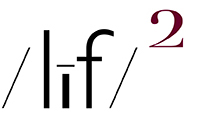HAVING MADE MY THOUGHTS ON “EXPERT” ADVICE giving known, I naturally came to the conclusion that I should break out of my self-imposed restraint-–and practice–of not giving picture making device. I know the followers of this blog have been clamoring–many for a couple decades–for my advice*. However, to avoid disappointment, be forewarned that there will be no advice, re: gear nor technique.So, on with the show….
ADVICE #1 - do NOT make pictures that you hope will appeal to other photographers.
This item should be self evident / unnecessary cuz one should be engaged in making pictures that appeal to one’s self (identity, individuality, normal state of being). This ain’t rocket science. It’s simple enough. Just trust and understand the lesson that Rick Nelson learned at the Garden Party; “You see, you can’t please everyone, so you got to please yourself.”
ADVICE #1a - (addendum to ADVICE #1) avoid showing your pictures to other photographers.
To be more precise, avoid showing your pictures to “serious” amateur photographers. These people are hidebound practitioners of rules, gear / technique fetishism, and conventionality. They flock, quite literally at times, to locations, scenes, and things that have been decreed by the roving hordes to be acceptable picture making fodder.
Contingent upon these proclivities, in both their picture making and picture viewing, they are very unlikely to see anything beyond the literal identity of that which is depicted in a picture. Their first reaction and comment to a picture which is intended to represent something beyond the literal–or any picture for that matter–is apt to be, “What camera did you use?” To state it quite bluntly, they are literally unable to see beyond the obvious.
END OF ADVICE (more to come)
ASIDE - Ok, if a photographer shows up at your door to see your pictures and it’s John Pfahl–Pfahl is known for his innovative landscape photography such as Altered Landscape, his first major series of un-manipulated color photographs on which he worked from 1974 through 1978. His work has been shown in over hundred group and solo exhibitions and is held in many public and private collections throughout the world–as he did at my loft door, ignore Advice # 1a and let him in.
And, here’s the thing that blew me away during his visit; he entered my studio through my entrance foyer which displayed some of my commercial work-food, fashion, product, people, et al. After a quick tour, I handed him a beat up KODAK Ektacolor print paper box containing contact sheets made from my urban landscape / street 8x10 color negatives. He took his time browse through them.
About half way through the prints, he paused and said that he was quite confused. His confusion stemmed from the fact that, as he phrased, “You’re a commercial photographer and you should not be able to make good work like this.” I could not have been more delighted. But of course, that written, I shouldn’t have to point out that Pfahl was not a “serious” amateur photographer.
FYI, the SX70 Polaroid Time Zero photo in this entry; I have always been attracted to the image results one can get from so-called “crappy” cameras–Lomo, Diana, and the like. Some might even have considered Polaroid cameras to be crappy cameras. In any event, I’ll delve into this attraction in another entry.
*advice, re: emphasis on pursuing a Fine Art objective
